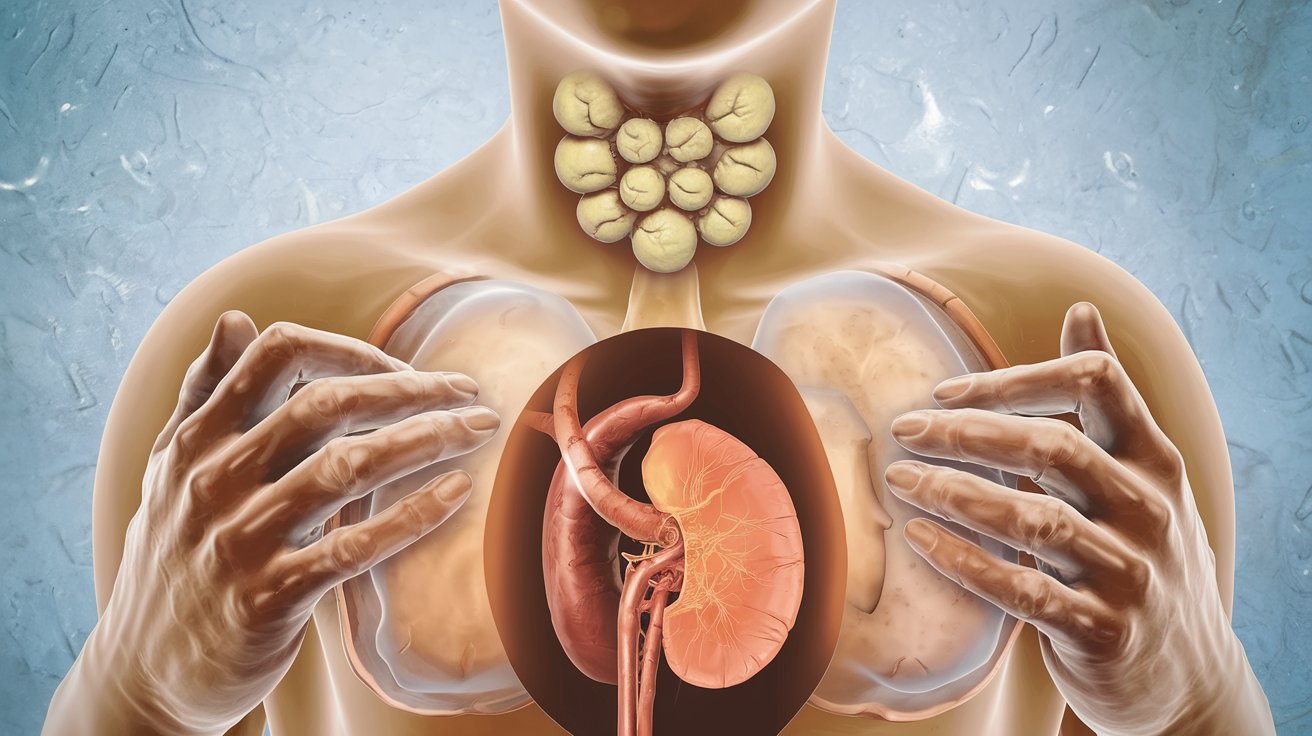
Multinodular goiter cystic kidney polydactyly might sound like a mouthful, but understanding it can be simpler than you think. This condition involves three main features: an enlarged thyroid with multiple nodules, cysts in the kidneys, and extra fingers or toes. Multinodular goiter refers to the thyroid gland having multiple lumps, which can affect hormone production. Cystic kidney means the kidneys develop fluid-filled sacs, potentially leading to kidney problems. Polydactyly is the presence of extra digits, which can occur on hands or feet. Knowing these facts can help you recognize symptoms and seek appropriate medical advice. Let's dive into 25 intriguing facts about this condition to shed light on its complexities and how it impacts those affected.
Key Takeaways:
- Multinodular goiter, cystic kidney disease, and polydactyly can affect different parts of the body, but they can sometimes be connected through genetic syndromes, so early diagnosis and genetic counseling are important.
- Living with these conditions requires regular monitoring, treatment, and support from healthcare professionals, but advancements in medical research offer hope for better treatments and outcomes in the future.
Understanding Multinodular Goiter
Multinodular goiter is a condition where the thyroid gland becomes enlarged and contains multiple nodules. This can affect thyroid function and overall health.
- Multinodular goiter is more common in women than men.
- Iodine deficiency is a leading cause of multinodular goiter worldwide.
- Symptoms can include a visible swelling in the neck, difficulty swallowing, and breathing problems.
- Diagnosis often involves ultrasound and blood tests to check thyroid function.
- Treatment may include medication, radioactive iodine, or surgery, depending on severity.
Exploring Cystic Kidney Disease
Cystic kidney disease involves the formation of fluid-filled sacs (cysts) in the kidneys, which can impair kidney function.
- Polycystic kidney disease (PKD) is the most common form of cystic kidney disease.
- PKD can be inherited in an autosomal dominant or recessive pattern.
- Symptoms include high blood pressure, back or side pain, and blood in the urine.
- Diagnosis is typically confirmed through imaging tests like ultrasound, CT scans, or MRI.
- Treatment focuses on managing symptoms and preventing complications, as there is no cure.
Delving into Polydactyly
Polydactyly is a condition where a person is born with extra fingers or toes. It can occur on one or both hands or feet.
- Polydactyly can be inherited or occur as a spontaneous mutation.
- Types include preaxial (extra digit on the thumb side) and postaxial (extra digit on the pinky side).
- Surgical removal is often performed for functional or cosmetic reasons.
- Polydactyly is more common in African American populations.
- Genetic testing can help determine if polydactyly is part of a syndrome.
The Intersection of These Conditions
While multinodular goiter, cystic kidney disease, and polydactyly are distinct conditions, they can sometimes be linked through genetic syndromes.
- Bardet-Biedl syndrome is a genetic disorder that can include polydactyly, kidney disease, and thyroid issues.
- Meckel-Gruber syndrome is another genetic condition that may present with polydactyly and cystic kidneys.
- Genetic counseling is recommended for families with a history of these conditions.
- Early diagnosis and intervention can improve quality of life for affected individuals.
- Research is ongoing to better understand the genetic links between these conditions.
Managing and Living with These Conditions
Living with any of these conditions requires careful management and support from healthcare professionals.
- Regular monitoring of thyroid function is crucial for those with multinodular goiter.
- Blood pressure control is important for individuals with cystic kidney disease.
- Physical therapy may benefit those with polydactyly to improve hand or foot function.
- Support groups can provide emotional and practical support for affected individuals and their families.
- Advancements in medical research offer hope for better treatments and outcomes in the future.
Final Thoughts on Multinodular Goiter Cystic Kidney Polydactyly
Understanding multinodular goiter, cystic kidney, and polydactyly can be overwhelming, but knowing the facts helps. These conditions, though complex, are manageable with the right medical guidance. Multinodular goiter involves multiple nodules in the thyroid, often requiring monitoring or treatment. Cystic kidney, characterized by fluid-filled cysts, can lead to kidney dysfunction if untreated. Polydactyly, the presence of extra fingers or toes, is usually corrected surgically for functional or cosmetic reasons.
Awareness and early detection play crucial roles in managing these conditions. Regular check-ups and consultations with healthcare professionals ensure timely interventions. While these medical terms might sound intimidating, breaking them down into understandable facts makes them less daunting. Stay informed, consult your doctor, and take proactive steps to maintain your health. Knowledge is power, especially when it comes to your well-being.
Frequently Asked Questions
Was this page helpful?
Our commitment to delivering trustworthy and engaging content is at the heart of what we do. Each fact on our site is contributed by real users like you, bringing a wealth of diverse insights and information. To ensure the highest standards of accuracy and reliability, our dedicated editors meticulously review each submission. This process guarantees that the facts we share are not only fascinating but also credible. Trust in our commitment to quality and authenticity as you explore and learn with us.
